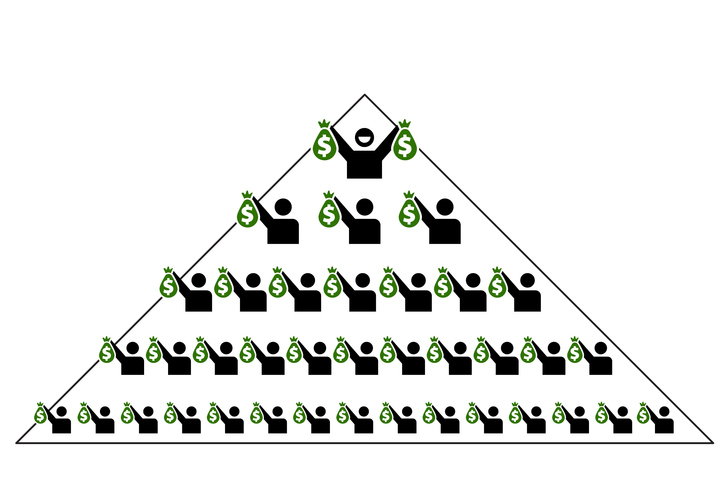Food labels are meant to help consumers make smarter choices, but in reality, many shoppers are still being misled—sometimes intentionally—by clever loopholes and vague terminology. Even the most health-conscious shoppers can fall victim to deceptive packaging, hidden ingredients, and misleading serving sizes.
Despite decades of advocacy for clearer food labeling, the food industry continues to exploit legal gray areas that allow them to market products in ways that seem healthier, cleaner, or simpler than they really are. Here’s how these loopholes still thrive and why even the most informed shoppers can be easily fooled.
The Serving Size Scam: Making Unhealthy Foods Seem Healthier
One of the oldest tricks in the book, and still legal under current labeling laws, is manipulating serving sizes to downplay unhealthy ingredients. Many packaged foods list nutrition facts based on unrealistically small servings.
For example, a bag of chips may list a serving size as just 11 chips. The label may show moderate levels of sodium or fat, but who actually stops at 11 chips? Most people eat two or three servings in one sitting without realizing it, effectively doubling or tripling their intake of calories, fat, and sodium.
Manufacturers have little incentive to adjust serving sizes to reflect typical consumption patterns, because doing so would make the nutrition facts look far less appealing. As a result, many shoppers falsely believe they’re making reasonable choices, not realizing the numbers only apply if they consume tiny portions.
“Zero” Doesn’t Always Mean Zero, Especially With Trans Fats and Sugars
Another misleading tactic involves “rounding down” small amounts of certain ingredients to zero on nutrition labels. Under U.S. regulations, companies can list “0 grams” of a nutrient if the product contains less than 0.5 grams per serving.
This loophole is most famously exploited with trans fats. Many processed foods claim to have “0 grams trans fat” per serving, but actually contain partially hydrogenated oils, meaning they still include trace amounts of trans fats.
Over time, consuming several servings of these products can add up to significant amounts of harmful fats. Similar tactics are used with sugars and other ingredients that some consumers try to avoid. Even shoppers who diligently check for “zero” numbers on labels can be misled, since the true amounts are hidden through legal rounding rules.
Hidden Sugar Sources Masquerading Under Different Names
While many shoppers know to look out for sugar, they may not realize just how many aliases it has on food labels. Manufacturers often disguise added sugars under complex or unfamiliar names, making it difficult to spot them at a glance.
Some common hidden sugars include:
MaltoseDextroseCane juiceEvaporated cane syrupBrown rice syrupAgave nectarFruit juice concentrate
A product labeled “no refined sugar” may still contain large amounts of these sweeteners, which spike blood sugar just like traditional table sugar. In fact, some “natural” or “organic” snacks contain more sugar than conventional options, despite healthier-sounding branding.
This web of alternate names allows companies to flood products with sweeteners while still appearing wholesome or minimally processed.
“Natural” and “Organic” Claims That Don’t Mean What You Think
The words “natural” and “organic” are among the most abused terms in the food industry. While “organic” does have a legal definition under USDA guidelines, the rules focus more on production methods than on the overall healthfulness of the product. An item can be certified organic yet still contain high levels of sugar, fat, and sodium. Organic cookies and snacks, for instance, may have the same calorie counts and nutritional risks as their non-organic counterparts.
“Natural,” on the other hand, remains largely unregulated. Companies can slap the word on products containing highly processed ingredients, artificial additives, and preservatives, provided they can argue those ingredients originated from “natural” sources. For shoppers who trust these labels at face value, it’s easy to assume a product is automatically healthy or minimally processed when the reality may be far more complicated.
Misleading Health Claims That Sound Official
Food manufacturers are adept at making claims that sound scientific or medically approved, even when they aren’t. Terms like “immune boosting,” “heart healthy,” or “supports brain function” are common on food packaging, but many of these claims are based on minimal scientific evidence or questionable research.
Some food companies also include statements like “clinically proven” based on small or weak studies that wouldn’t meet rigorous scientific standards. Others cherry-pick favorable results while ignoring broader research that might contradict their claims.
Even for savvy shoppers who read labels carefully, it can be difficult to separate marketing spin from genuine nutritional value, especially when packages feature official-looking seals or scientific-sounding terms.
Ingredient Splitting: Hiding Unhealthy Ingredients by Breaking Them Up
One of the sneakiest labeling tactics is known as “ingredient splitting.” This occurs when food manufacturers list similar ingredients separately to make them appear less prominent in the ingredient list.
For example, instead of listing “sugar” as the first ingredient, a manufacturer might break it down into multiple components like “cane sugar,” “honey,” and “brown rice syrup.” This pushes each sweetener further down the list, making it seem like there’s less sugar in the product than there really is.
Because food labels must list ingredients by weight from highest to lowest, splitting ingredients is an easy way to manipulate appearances without technically violating any rules.
“Made With” Claims That Overstate Key Ingredients
Another common loophole involves “made with” claims, such as “made with whole grains” or “made with real fruit.” While these statements may be technically true, they can be wildly misleading about how much of the ingredient is actually in the product.
A cereal “made with whole grains” may contain just a trace amount of whole wheat amid a much larger quantity of refined flour and sugar. Similarly, a snack “made with real fruit” might contain just a tiny percentage of fruit puree, dwarfed by sweeteners and artificial flavorings.
Many shoppers take these statements at face value, assuming the product is built around these wholesome ingredients, when in reality, they’re often afterthoughts added in small amounts for marketing purposes.
Why Food Labels Still Fool Even the Most Careful Shoppers
Despite years of calls for transparency and clearer nutrition information, food labels remain full of traps, loopholes, and technicalities designed to mislead consumers. Even informed shoppers who scrutinize packaging can easily fall for deceptive serving sizes, hidden sugars, and vague health claims.
The challenge isn’t just in reading the fine print. It’s in knowing how companies use legal tactics to present their products in the most flattering light. From ingredient splitting to misleading “zero” claims, food manufacturers have mastered the art of skirting regulations without breaking them outright.
The best defense? Take time to carefully read ingredient lists, not just the front of the package, and watch out for tricky marketing language. Being a savvy shopper requires more than just checking calories; it demands a deeper understanding of how the food industry works behind the scenes.
Have you ever discovered a surprising or misleading food label on something you thought was healthy? What tricks do you look out for when shopping?
Read More:
5 Laundry Detergents That Could Be Harming Your Health
Could Your Favorite Candle Be Wrecking Your Health? The Truth About “Clean Scents”
Riley Schnepf is an Arizona native with over nine years of writing experience. From personal finance to travel to digital marketing to pop culture, she’s written about everything under the sun. When she’s not writing, she’s spending her time outside, reading, or cuddling with her two corgis.



























